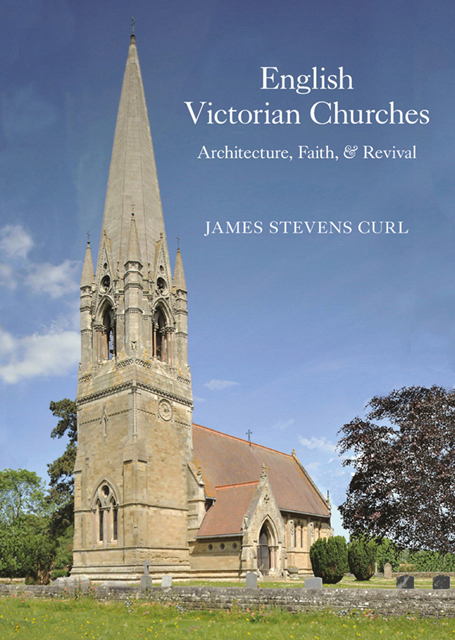Book contents
- Frontmatter
- Dedication
- Contents
- Foreword by Barry Orford
- Preface and Acknowledgements
- Note on Illustrations
- 1 An Introduction to Denominations and Victorian Churches
- 2 Architecture, Antiquarianism, and Styles
- 3 The Religious Atmosphere in the 1830s and 1840s
- 4 Recusants, Goths, Converts, Ultramontanes, and Controversies
- 5 The Anglican Revival
- 6 The Search for an Ideal
- 7 Church Architecture of the 1850s, 1860s, and Early 1870s
- 8 The Late Victorian Anglican Church in Several Manifestations
- 9 Non-Anglican Buildings for Religious Observance
- 10 Epilogue
- Select Glossary
- Select Bibliography
- Index
2 - Architecture, Antiquarianism, and Styles
Published online by Cambridge University Press: 08 June 2023
- Frontmatter
- Dedication
- Contents
- Foreword by Barry Orford
- Preface and Acknowledgements
- Note on Illustrations
- 1 An Introduction to Denominations and Victorian Churches
- 2 Architecture, Antiquarianism, and Styles
- 3 The Religious Atmosphere in the 1830s and 1840s
- 4 Recusants, Goths, Converts, Ultramontanes, and Controversies
- 5 The Anglican Revival
- 6 The Search for an Ideal
- 7 Church Architecture of the 1850s, 1860s, and Early 1870s
- 8 The Late Victorian Anglican Church in Several Manifestations
- 9 Non-Anglican Buildings for Religious Observance
- 10 Epilogue
- Select Glossary
- Select Bibliography
- Index
Summary
Tousles genres sont bons hors le genre ennuyeux.
(All styles are good, except the boring kind).
François-Marie Arouet (Voltaire) (1694–1778): Preface to L’Enfant prodigue (1736).Pointed architecture came into existence, not in the weakness of infancy, but like a new and heaven-born principle; it proceeded through a surprisingly rapid course, constantly assuming new forms, each in perfect consistency with its exalted principles, and ever throwing aside those which had been once developed and made use of, till it attained the highest pitch of beauty and glory.
George Gilbert Scott (1811–78): A Plea for the Faithful Restoration of our Ancient Churches(Oxford: John Henry Parker, 1850), 24–5.Introduction
Architecture once had profound resonances: one only has to consider how the style, miscalled ‘Gothic’, has been perceived, used, and evolved, to realise that meaning in architecture was at one time significant in terms of culture, politics, continuity, and much else. Surviving English mediæval parish churches are generally Gothic, and were created for R.C. religious observance. They are familiar aspects of villages, towns, and landscapes, and have been eloquent witnesses to a millennium or more of history: in some extraordinary way they represent what was the collective memory (now being rapidly eroded) of the English people.
Victorian churches came in a variety of styles. By far the most numerous were Gothic, often freely treated in original ways, with exquisite craftsmanship, and showing evidence of impressive scholarship. This phenomenon, known as the ‘Gothic Revival’, produced many of England’s greatest works of architecture, and forms the kernel of this study, so explanations of its origins and widespread adoption need to be outlined.
The Residue of a National Architecture
Long before the Victorian Age, a sophisticated European ecclesiastical architecture had evolved, and post-mediæval Europe inherited many Gothic buildings. Yet Italian Renaissance architects despised Gothic as German, accursed, and irrational, invented by Teutonic invaders who had sacked Imperial Rome in 410 (thus destroying the Antique Classical culture Renaissance architects and patrons were trying to recover), but by then the mediæval systems that invented Gothic had largely collapsed, for Teutons led a more revolutionary attack on mediævalism after Luther posted his theses against the abuse of indulgences in 1517. Ensuing theologies led to the establishment of Protestantism and a rejection of papal authority in Northern Europe.
- Type
- Chapter
- Information
- English Victorian ChurchesArchitecture, Faith, and Revival, pp. 11 - 20Publisher: Boydell & BrewerPrint publication year: 2022

